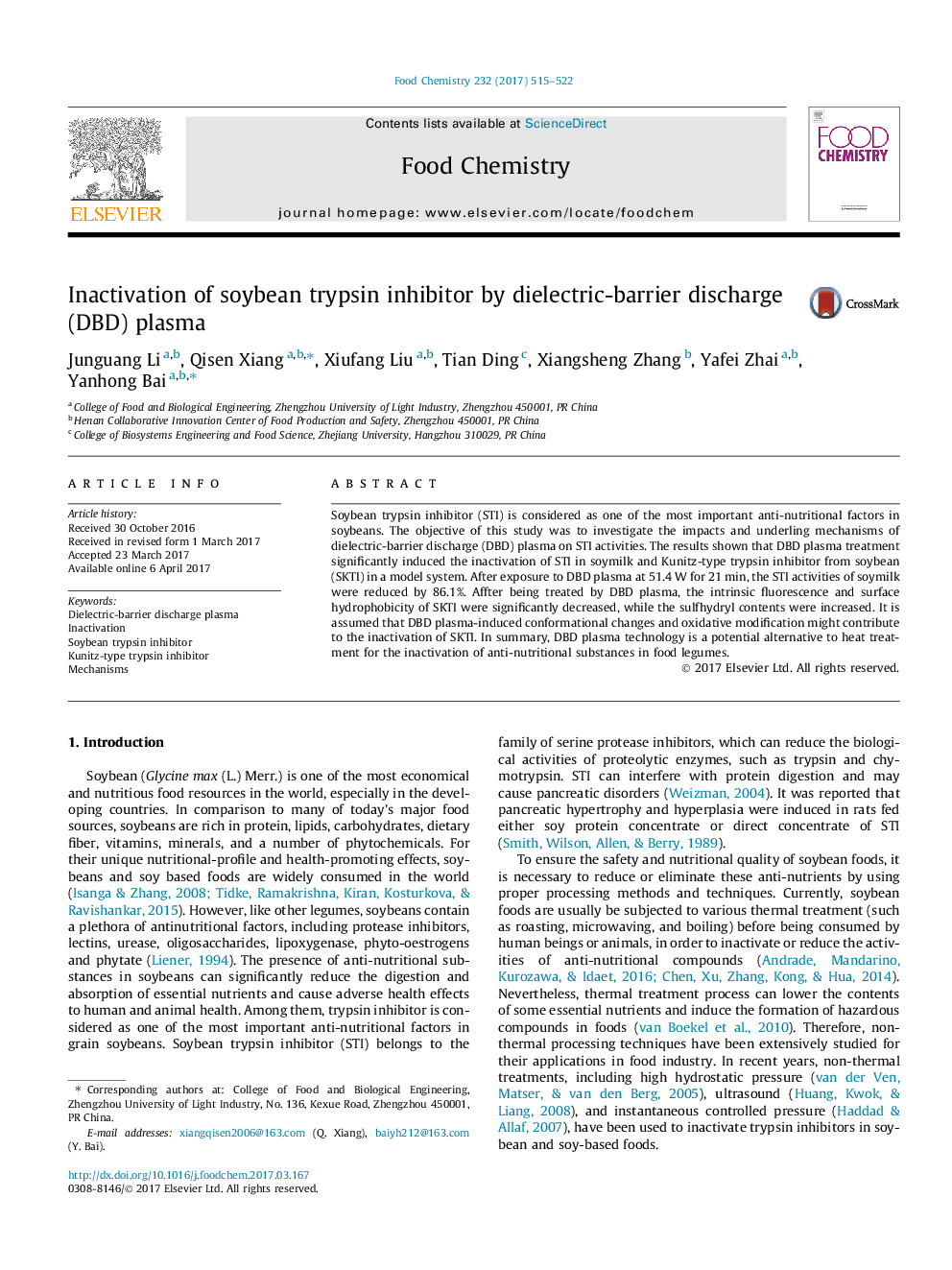| کد مقاله | کد نشریه | سال انتشار | مقاله انگلیسی | نسخه تمام متن |
|---|---|---|---|---|
| 5133432 | 1492060 | 2017 | 8 صفحه PDF | دانلود رایگان |

- A new method for inactivating STI is supplied.
- DBD plasma results in increase in sulfhydryl contents of SKTI.
- DBD plasma causes conformational changes of SKTI.
- DBD plasma results in decrease in the surface hydrophobicity of SKTI.
Soybean trypsin inhibitor (STI) is considered as one of the most important anti-nutritional factors in soybeans. The objective of this study was to investigate the impacts and underling mechanisms of dielectric-barrier discharge (DBD) plasma on STI activities. The results shown that DBD plasma treatment significantly induced the inactivation of STI in soymilk and Kunitz-type trypsin inhibitor from soybean (SKTI) in a model system. After exposure to DBD plasma at 51.4Â W for 21Â min, the STI activities of soymilk were reduced by 86.1%. Affter being treated by DBD plasma, the intrinsic fluorescence and surface hydrophobicity of SKTI were significantly decreased, while the sulfhydryl contents were increased. It is assumed that DBD plasma-induced conformational changes and oxidative modification might contribute to the inactivation of SKTI. In summary, DBD plasma technology is a potential alternative to heat treatment for the inactivation of anti-nutritional substances in food legumes.
Journal: Food Chemistry - Volume 232, 1 October 2017, Pages 515-522